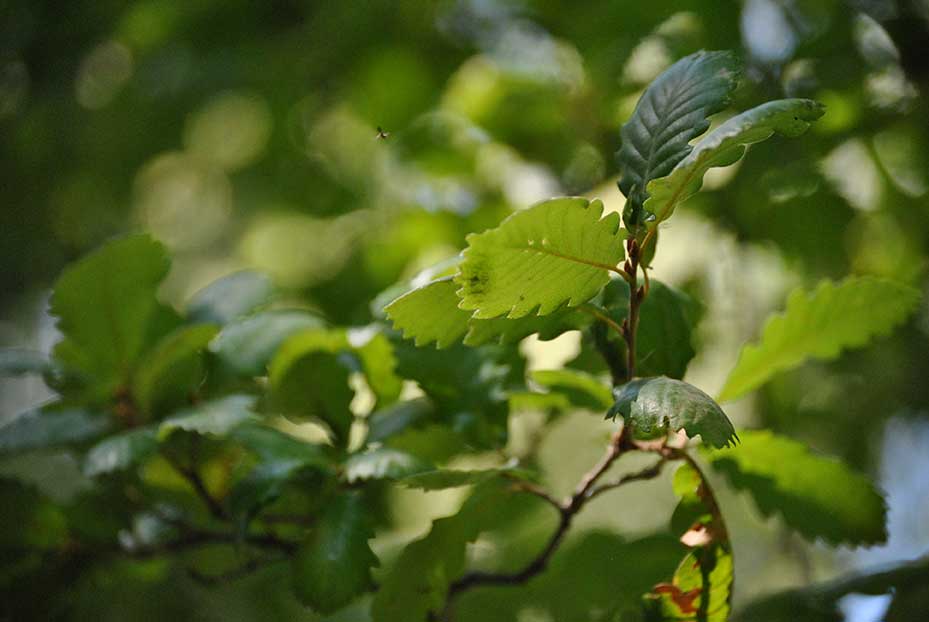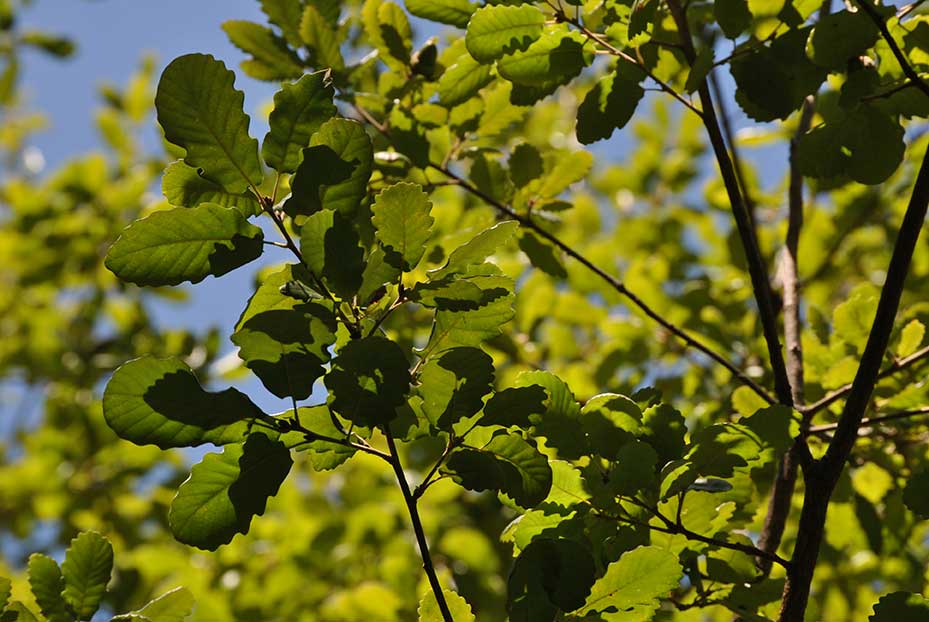
Portuguese Oak
Quercus faginea subsp. broteroi
Family and description
Of the Fagaceae family, the Portuguese oak is a marcescent tree – the leaves dry on the crown and remain there until spring. It can reach a height of 20 m, has a rounded crown with branches and abundant foliage and the trunk is rough with a greyish or greyish-brown bark.
The leaves are simple, alternate, oblong to obovate with broad and narrow stipules and are 2 to 11 cm long. The margin is slightly dentate or oval, the upper side is smooth and the underside has long starry hairs.
The flowers bloom from March to May. The male ones are arranged in groups on large 4-8 cm catkins, hanging but not firmly. The female ones are solitary, inside a dome.
The fruit are cylindrical acorns that are born on short pedicels, with a dome of triangular scales. They mature and spread in September and October.
Origin and habitat
Originally from the Iberian Peninsula, south-eastern France, Morocco and Algeria. Its natural habitat is marcescent woods, often with mixed species, in all kinds of soils, in Mediterranean climate areas, spreading at altitudes of 0 to 1200 m.
Uses and curiosities
The use of Portuguese oak in the construction of ships and caravels during the time of discovery led to a significant drop in the number of these trees. Its high quality wood is still used for construction, firewood and for tanning leather.
Well-kept Portuguese oak woods are protected and ideal habitats for countless animal species characteristic of Mediterranean regions, from arachnids and insects to amphibians, birds such as the jay and mammals including the deer and Iberian lynx.
As an individual tree, it is very abundant throughout central and southern Portugal.

